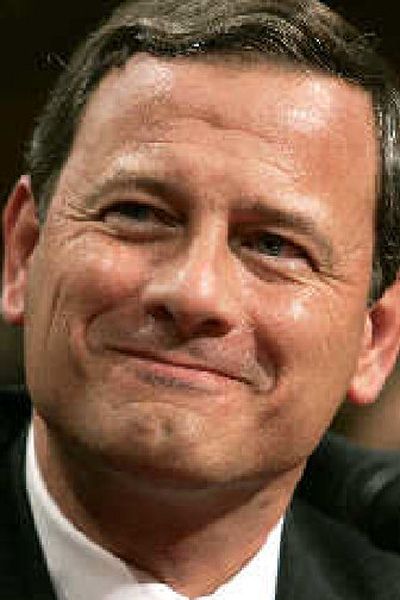Roberts faces vote; Bush faces choices

WASHINGTON – As the Senate votes today to confirm the first of two President Bush nominees to the Supreme Court, the administration is wrapping up an interview process similar to the one that produced Chief Justice-designee John G. Roberts Jr.
While Bush asked aides to research more female jurists for this opening, he is also looking at longtime candidates who have backing from conservative legal organizations, said attorneys familiar with the review.
The president has also evaluated the records of Hispanic, African American, and white male candidates, mindful that any proposed replacement for Justice Sandra Day O’Connor will likely provoke a fight.
“Democrats seem more ready to fight this one, almost no matter who it is,” said Jennifer Duffy, Senate editor for the Washington-based Cook Political Report.
Bush could make his nomination as early as today, the same day the Senate is expected to confirm Roberts to succeed Chief Justice William Rehnquist, who died Sept. 3.
And while the president ordered aides to review more female candidates, attorneys familiar with the process said he has ruled out no individual or group.
“I am mindful that diversity is one of the strengths of the country,” Bush said earlier this week.
Virtually any nominee could provoke protest – from Bush allies as easily as from Democrats.
If Bush nominates appeals judge Priscilla Owen, he risks uniting Democrats who once blocked her appointment as a federal judge.
If he picks his close friend, Attorney General Alberto Gonzales, to be the Supreme Court’s first Hispanic justice, he faces opposition from conservative supporters who call the attorney general squishy on abortion.
And if he picks any white male to succeed the first woman justice, he will face the disapproval of some of the women around him, including first lady Laura Bush, who has suggested she would favor a female justice.
As they had with Roberts, White House attorneys have followed a handful of potential high court candidates for years, compiling information in notebooks for Bush’s perusal.
One difference from the process that yielded Roberts’ candidacy is a more abundant presence of women, including Karen Williams, an appeals judge from South Carolina, and Harriet Miers, who as White House counsel is helping to conduct the search.
The list also includes more familiar names: Owen of Austin, Texas; Edith Jones of Houston; and Janice Rogers Brown of Washington, D.C. – all federal appellate judges.
Bush and aides say they have reached out to nearly 70 senators on the upcoming choice. Democrats have submitted several “consensus candidates,” but all are considered long shots.
Other consultations have come from conservative legal groups that have long made the federal courts a top priority. They include such groups as the Federalist Society and the American Center for Law and Justice.
Tony Perkins, president of the influential Family Research Council, said the administration seems to be going to great lengths to consider a woman to replace O’Connor. He said such a move would have no significance to his socially conservative organization.
“The only thing that matters to us is that it is someone who understands the role of the court the way the president has described it,” Perkins said. “That is: to interpret the laws; not to create policy.”
Nan Aron, president of the Alliance For Justice, said Bush has consistently nominated what she called extreme conservatives for all kinds of judgeships. She expects him to follow suit soon.
“The best way to galvanize the right wing,” she said, “is to give them their judges.”